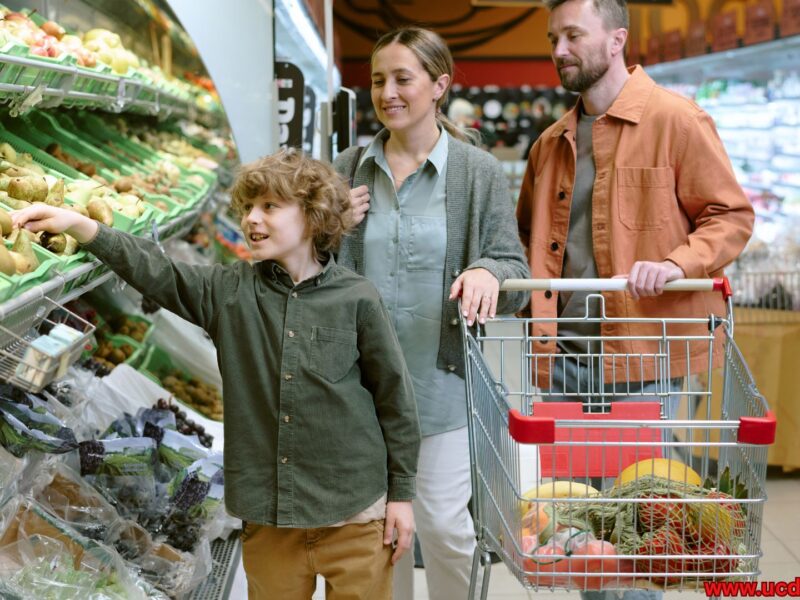Top 10 Educational Toys for Babies
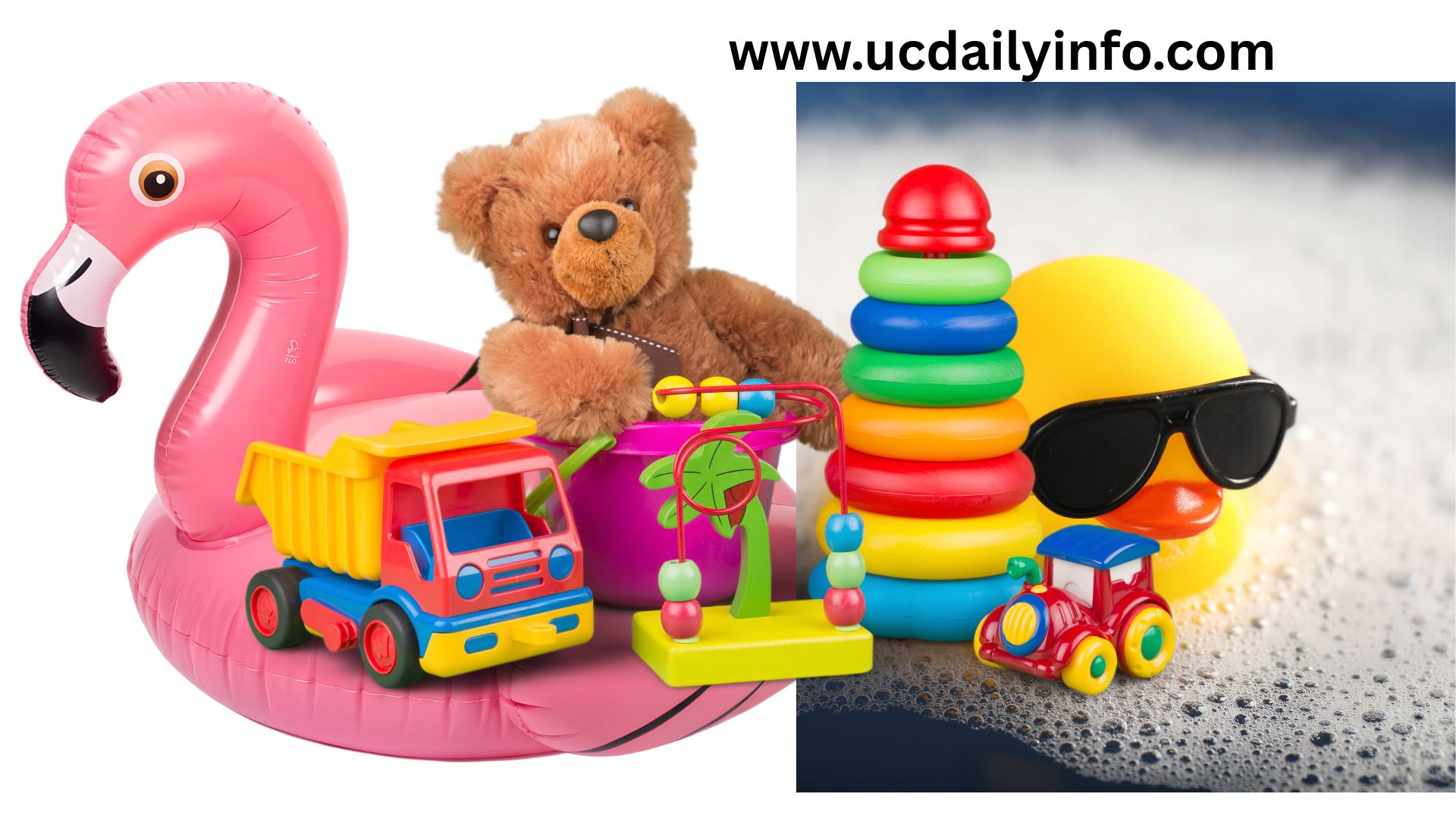
As parents, we all want the best for our little ones, and playtime is one of the most powerful ways to support their growth. Babies don’t just play for fun , every shake of a rattle, squeeze of a soft toy, or giggle during peek-a-boo is helping them learn about the world around them. The right educational toys can turn everyday play into meaningful learning moments, boosting skills like problem-solving, coordination, and early communication. In this guide, we’ll share the top 10 educational toys for babies that combine fun with development, so you can feel confident about the toys you choose for your child.
Why Educational Toys Matter in Early Development
The early years of a baby’s life are often called the “building blocks” of development. During this time, babies are like sponges, absorbing sights, sounds, and experience that shape how they grow and learn. Educational toys play a key role because they turn simple play into powerful learning opportunities.
For example, toys that encourage grasping and stacking help strengthen fine motor skills and hand-eye coordination. Musical toys and rattles introduce babies to cause-and-effect, while colorful, textured items stimulate their senses and curiosity. As babies grow, shape sorters and activity gyms begin to nurture problem-solving, memory, and even early language skills.
By providing age-appropriate educational toys, parents can support their child’s physical, cognitive, and social-emotional development in a fun and engaging way. These toys aren’t just “extras” they are tools that prepare babies for future milestones and make learning a natural part of playtime.
Factors to Consider Before Buying Educational Toys (Top 10 Educational Toys for Babies)
Not all toys are created equal, and when it comes to babies, choosing the right ones makes a big difference. Before adding a new toy to your little one’s collection, here are some key factors to keep in mind:
- Safety First
Babies love to explore with their mouths, so make sure toys are non-toxic, BPA-free, and free of small parts that could pose a choking hazard. Always check for smooth edges and sturdy designs. - Age-Appropriateness
Every toy is designed with a specific age range in mind. Choosing toys that match your baby’s developmental stage ensures they are both safe and engaging without being too advanced or frustrating. - Developmental Benefits
Look for toys that encourage growth in different areas , such as fine motor skills, problem-solving, sensory development, or early language. A well-rounded mix of toys can help your baby learn through play. - Durability and Easy Care
Babies can be tough on their toys. Pick items that are durable, easy to clean, and able to withstand everyday use, especially if they’ll be shared with siblings. - Engagement Value
The best educational toys keep your baby curious and entertained while also teaching something new. Opt for toys that encourage exploration and can grow with your child over several months.
By considering these factors, parents can invest in toys that are not only fun but also safe, meaningful, and long-lasting.
Top 10 Educational Toys for Babies
Choosing the right toys can help your baby learn new skills while having fun. Below are 10 parent-approved educational toys that support early development and make playtime both safe and meaningful.
- Soft Cloth Books
 Age Range: 0–12 months
Age Range: 0–12 months- Key Benefits: Encourages visual stimulation, introduces colors and patterns, supports early language development when read aloud.
- Why Parents Love It: Lightweight, washable, and safe for teething babies. Parents enjoy bonding time while reading and exploring textures with their little ones.
- Stacking Cups or Rings
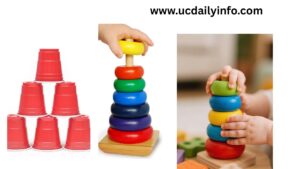 Age Range: 6–18 months
Age Range: 6–18 months- Key Benefits: Builds fine motor skills, hand-eye coordination, and problem-solving as babies figure out how to stack and unstack.
- Why Parents Love It: Simple, durable, and versatile , these toys can be used for stacking, pouring water during bath time, or even sand play.
- Baby Activity Gyms/Play Mats
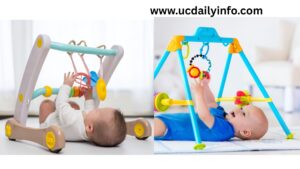 Age Range: 0–12 months
Age Range: 0–12 months- Key Benefits: Strengthens muscles during tummy time, stimulates senses with textures, lights, and sounds.
- Why Parents Love It: Keeps babies entertained while giving them safe space to explore. Many mats are portable and easy to clean.
- Rattles and Sensory Balls
 Age Range: 0–9 months
Age Range: 0–9 months- Key Benefits: Improves grasp reflex, introduces cause-and-effect, and enhances auditory and tactile development.
- Why Parents Love It: Compact, lightweight, and perfect for on-the-go play. Babies love the gentle sounds and textures. 5. Shape Sorters
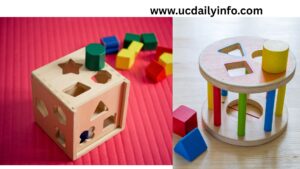 Age Range: 9–18 months
Age Range: 9–18 months- Key Benefits: Teaches problem-solving, shape recognition, and hand-eye coordination.
- Why Parents Love It: Durable and engaging, these toys grow with your baby as they progress from simple banging to actual sorting.
- Musical Toys (e.g., Baby Piano or Drum Set)
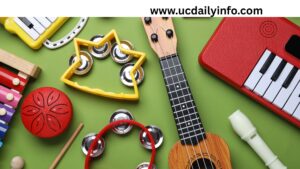 Age Range: 6–18 months
Age Range: 6–18 months- Key Benefits: Introduces rhythm and sound recognition, boosts creativity, and teaches cause-and-effect.
- Why Parents Love It: Babies love pressing buttons and making sounds, while parents appreciate how these toys encourage self-expression.
- Montessori Wooden Toys
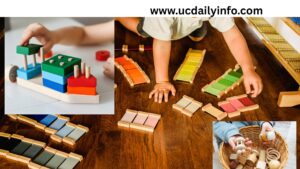 Age Range: 6–24 months
Age Range: 6–24 months- Key Benefits: Promotes creativity, concentration, and sensory exploration with simple, natural materials.
- Why Parents Love It: Eco-friendly, safe, and durable. Many parents value the minimalist design that avoids overstimulation.
- Push-and-Pull Toys
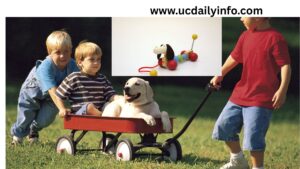 Age Range: 12–24 months
Age Range: 12–24 months- Key Benefits: Strengthens gross motor skills, supports walking, and encourages balance and coordination.
- Why Parents Love It: Provides active play opportunities, making it a favorite for toddlers learning to walk.
- Bath Toys (Floating Shapes or Cups)
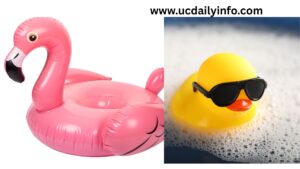 Age Range: 6–18 months
Age Range: 6–18 months- Key Benefits: Stimulates sensory play, introduces basic science concepts like sinking and floating, and encourages creativity.
- Why Parents Love It: Makes bath time fun while being easy to clean and store.
- Baby Mirror Toys
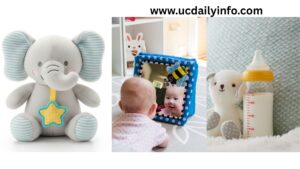 Age Range: 0–12 months
Age Range: 0–12 months- Key Benefits: Promotes self-recognition, visual tracking, and social-emotional development.
- Why Parents Love It: Babies love looking at faces, and mirrors keep them engaged during tummy time or play sessions.
Each of these toys provides more than entertainment , they help build a strong foundation for your baby’s future learning and growth.
Tips for Parents on Choosing Educational Toys (Top 10 Educational Toys for Babies)
Finding the right educational toys for your baby doesn’t have to feel overwhelming. With so many options available, it helps to focus on what truly supports your little one’s growth and keeps them happily engaged. Here are some practical tips to guide you:
- Keep It Simple
The best toys don’t need to be flashy or expensive. Babies often enjoy simple items like stacking cups or soft books that encourage exploration and imagination. - Choose Toys That Grow with Your Baby
Look for toys that can be used in different ways as your baby develops. For example, stacking rings can be chewed on at first, then later used for building coordination and problem-solving. - Encourage Different Skills
Mix a variety of toys to target multiple areas of development , motor skills, sensory play, language learning, and problem-solving. This helps create well-rounded learning experiences. - Prioritize Safety
Always check labels for non-toxic materials, avoid small detachable parts, and choose sturdy designs. Safe toys give parents peace of mind during playtime. - Rotate Toys Regularly
Babies get bored quickly. Rotating toys every week keeps playtime fresh, encourages curiosity, and allows your baby to rediscover toys with excitement.
By keeping these tips in mind, parents can confidently select toys that not only entertain but also support meaningful growth at every stage.
Safety Tips When Using Baby Toys
Playtime is an exciting part of your baby’s day, but safety should always come first. Since babies explore with their hands and mouths, even the most trusted toys need a little extra attention. Here are some important safety tips to keep in mind:
- Always Supervise Playtime
Never leave your baby unattended with toys, especially those with moving parts or detachable pieces. Supervision ensures quick action if something unexpected happens. - Check for Age Appropriateness
Stick to toys that match your baby’s age range. Toys designed for older children may contain small parts or sharp edges that pose choking and injury risks. - Inspect Toys Regularly
Look for cracks, loose pieces, or broken parts that could become hazardous. Replace worn-out or damaged toys immediately. - Keep Toys Clean
Babies love to put toys in their mouths. Wash and sanitize toys often to keep them free from dirt, dust, and germs. - Avoid Strings, Magnets, and Batteries (Unless Sealed Safely)
Strings longer than a few inches can be a strangulation risk, while loose magnets or accessible batteries are dangerous if swallowed. Only choose toys that meet strict safety standards. - Choose Non-Toxic Materials
Check labels for “BPA-free,” “phthalate-free,” and “non-toxic paint” to ensure the materials are safe for your baby.
By following these safety tips, parents can create a play environment that’s both fun and secure, giving babies the freedom to explore and learn without unnecessary risks.
Conclusion
Educational toys do more than just entertain, they play a vital role in helping babies learn, grow, and reach important milestones. From building motor skills with stacking cups to sparking curiosity with musical toys, the right playthings turn everyday moments into opportunities for discovery.
When choosing toys, remember to prioritize safety, age-appropriateness and developmental value. A few well-chosen items can make a big difference in your baby’s early learning journey, while also creating fun and memorable bonding moments for the whole family.
Every baby is unique, so observe what captures your little one’s attention and choose toys that encourage their natural curiosity. With the right mix, you’ll not only keep your baby engaged but also support their growth in meaningful ways.
Which educational toy has been your baby’s favorite? Share your experiences in the comments; your insight could help another parent!
You May Also Like:
Best Baby Strollers for Newborns
How to Handle Tantrums in 2-Year-Olds
How to Raise Confident and Independent Kids
Parenting advice for raising confident kids


